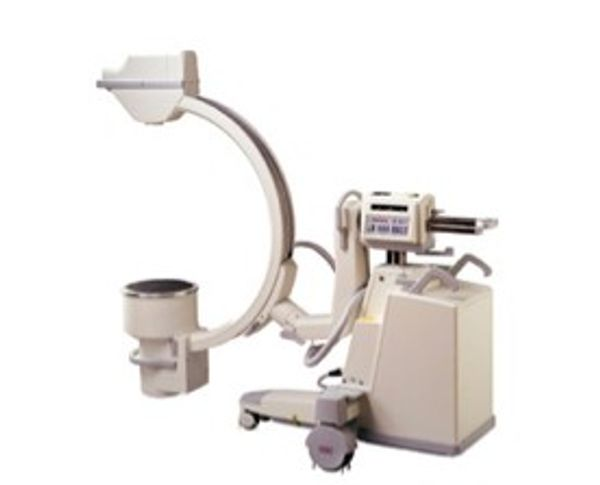Saturation Fault
RE: Mobile C-Arm Report Post

FAULT PAL OVERVIEW
Fault PAL U2 monitors the system for the following fatal fault conditions:
· Saturation Fault
· Overvoltage Fault
· Overload Fault
During any of these fault conditions, the FAULT signal which is fed to the HV Drive PAL
U7-9 prevents X-rays by disabling the HVDRA and HVDRB signals. The outputs of the
fault PAL U2 are also fed to the Technique Processor for software monitoring through
the Analog Interface PIO U27. When software detects a fault, the Technique Processor
shuts the system down by disabling the 24V interlock circuit. The Technique Processor
also displays the appropriate error message on the generator control panel display.
SATURATION FAULT
The Darlington power transistors Q1 and Q2 drive the primary winding of the high
voltage transformer contained within the tank assembly. Normally, the voltage drop
across the Darlington’s output, when turned-on, is minimal indicating a completely
saturated transistor.
However, if a Darlington transistor becomes weak (or if too much current passes through
a Darlington transistor) a relatively large voltage is dropped across its output during the
on-time. This excess voltage drop is detected by the system and defines a Saturation
Fault.
If a fault occurs, the message SATURATION FAULT is displayed on the Control Panel.
This is a fatal error resulting in a system shut down preventing X-rays.
Saturation Fault Circuit
The bridge rectifier VR1 and Q9 on the Generator Driver PCB samples the voltage drop
of which-ever of the two upper transistors of the H-Bridge is turned on at the time. This
voltage is referenced to ground level by Q9 at R19. In effect, the voltage across R19
represents the voltage across the Darlington power transistor. This voltage is fed
through CR23 to TP7 and then to TP3 and comparator U14 on the X-ray Regulator PCB.
VR1’s negative output samples the drop on the “lower half” of the H-Bridge for the same
purpose.
On the X-ray Regulator PCB, this sense voltage (SATDET) is monitored by comparator
U14-2. A reference voltage derived by R35 and R36 of approximately 8 VDC is applied
to U14-3. This voltage is the comparator’s threshold voltage which represents the
maximum allowable voltage drop across the Darlington’s output during their on-time. A
10 kV Generation
Saturation Fault occurs when the SATDET voltage on U14-2 exceeds the reference
voltage on U14-3 causing U14-7 to go high.
A high output from comparator U14-7 (FAULT 1) causes the Fault PAL U2-14
(SATURATION FAULT) and U2-13 (FAULT) to go high.
The logic high FAULT output of Fault PAL U2-13 prevents X-rays by disabling the
HVDRVA and HVDRVB signals from the high voltage drive PAL U7.
The logic high SATURATION FAULT output of U2-14 and the logic high FAULT output
of U2-13 are also monitored by the Technique Processor PCB via the Analog Interface
PIO U27. This condition is a fatal error and causes a system shutdown. The message
SATURATION FAULT is displayed on the generator control panel display.
The DRVON signal (U11-8) disables the sample voltage during Darlington off-time,
preventing a Saturation Fault from occurring. DRVON is active high when either
HVDRVA or HVDRVB is active and floats to the sample voltage during this period.
DRVON is low (open-collector output to ground) during the off-time of the Darlingtons
and pulls the sample voltage to ground. This is necessary because when any transistor
is turned off, the voltage drop across its output is typically large.
Report Post

